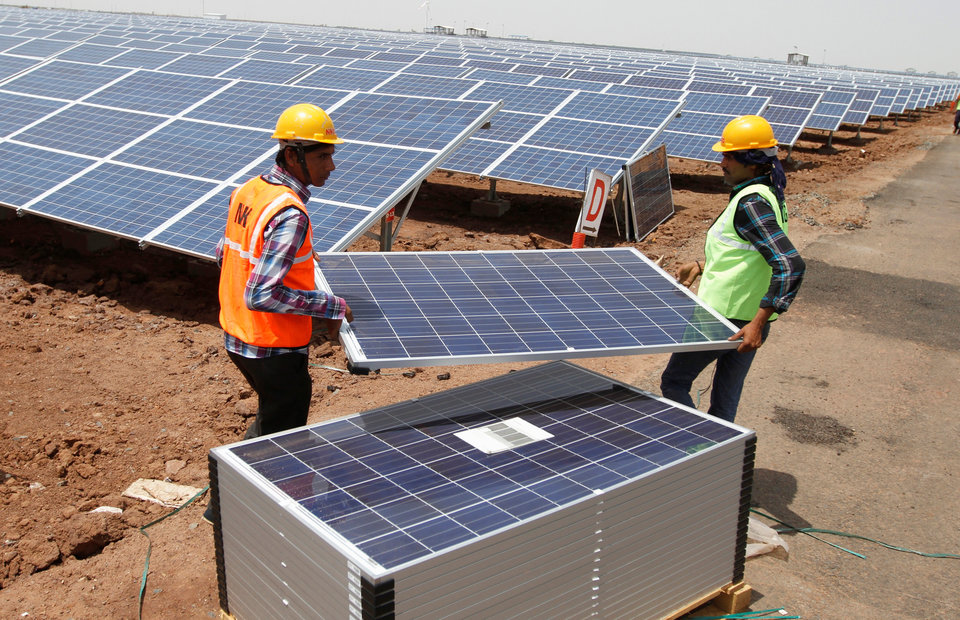After 40 Years, Researchers Finds Why Solar Panels Offer The Low Efficiency
Viswamitra Jayavant - Jun 17, 2019

For forty years, researchers have been wondering why solar panels lose a tiny bit of their generated power while they're working. Now, we have finally found the answer.
- This Solar Panel Can Work Even When There's No Sunlight
- Solar-Powered Yacht Travels Endlessly Without Fuel, Noise Or Emissions
- This City Installs 187 Solar Panels For Rs 80 Lakh, Forgets To Connect Them For 6 Months
When it comes to renewable and ‘green’ energy, the images of large slabs of solar panels enter our mind. But no matter how rapidly solar energy has been advanced and adopted in recent years, even the foremost symbol of the future’s energy industry has its own trouble. In spite of the designs and manufacturers, this kind of energy is still strangely inefficient: There is a mysterious physical phenomenon that makes solar panels lose energy as it is generated.

Obviously, the deficit can amount to a lot. And all of that lost energy must be made up by non-renewable sources to keep up with ever-increasing demand. In time we’re all trying to be as environmentally friendly as possible, that hampers global effort in greening the energy industry.
There’s good news on the horizon, however. After 40 years of efforts put forward by researchers all over the world, the mystery behind low solar panel efficiency has been solved.
LID
Published recently on the Journal of Applied Physics, a study indicated that there was a material defect that had gone undetected until now. And it appears in silicon that is used to create solar cells.
The reports also pointed out that the researchers agreed upon the explanation that this defect is most likely the culprit for the 2% loss of efficiency in solar panels while generating electricity at sunrise. In scientific terms, this is known as ‘Light-Induced Degradation’ (LID).

The researchers found this hidden defect with a technique known as ‘Deep-Level Transient Spectroscopy’ (DLTS), according to the report. When the solar panel begins to generate energy, because of the increasing sunlight hitting the surface of the panel, the electron flows get trapped. This is manifested in the form of a net decrease in the electricity generated.
As it turns out, it is a fundamental defect that lies within the silicon itself. So as long as silicon is used as the primary material for solar panels (Which everyone does), the resulting panels will suffer from LID. The defect lies dormant within the silicon up until it is heated by sunlight.
An Engineering Fix Is All We Need

If engineers and researchers can find a solution that either erases or minimizes LID, it will give rise to super-efficient solar panels to revolutionize the energy industry in the future.
Featured Stories

Features - Jul 01, 2025
What Are The Fastest Passenger Vehicles Ever Created?

Features - Jun 25, 2025
Japan Hydrogen Breakthrough: Scientists Crack the Clean Energy Code with...

ICT News - Jun 25, 2025
AI Intimidation Tactics: CEOs Turn Flawed Technology Into Employee Fear Machine

Review - Jun 25, 2025
Windows 11 Problems: Is Microsoft's "Best" OS Actually Getting Worse?

Features - Jun 22, 2025
Telegram Founder Pavel Durov Plans to Split $14 Billion Fortune Among 106 Children

ICT News - Jun 22, 2025
Neuralink Telepathy Chip Enables Quadriplegic Rob Greiner to Control Games with...

Features - Jun 21, 2025
This Over $100 Bottle Has Nothing But Fresh Air Inside

Features - Jun 18, 2025
Best Mobile VPN Apps for Gaming 2025: Complete Guide

Features - Jun 18, 2025
A Math Formula Tells Us How Long Everything Will Live

Features - Jun 16, 2025
Comments
Sort by Newest | Popular